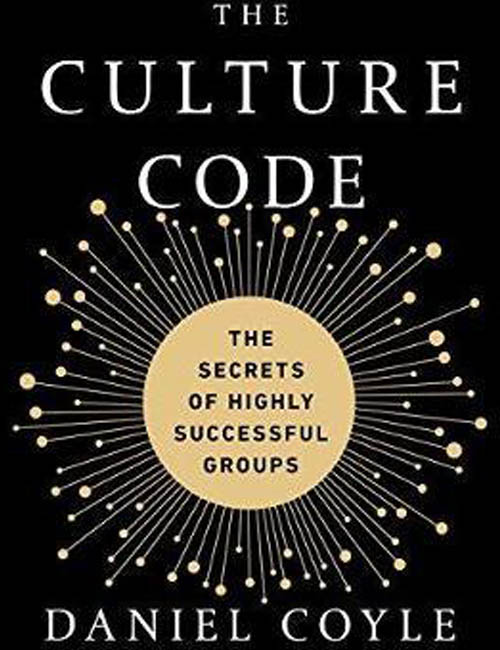Reviewed by Katrina Noelle, kn@knowresearch.com
KNow Research, San Francisco, CA
Culture Code: The Secrets of Highly Successful Groups, by Daniel Coyle, is a very relevant read for insights professionals looking to build both long- and short-term group cultures. I initially chose the book as a resource for building supportive and effective team culture within my own organization. However, once I started reading, I discovered how relevant and transferable Coyle’s insights are to insights professionals who want to create better research group dynamics within research studies.
Coyle provides guidance on how to build a cohesive, motivated culture based on his time observing some of the world’s most successful organizations (e.g., US Navy’s SEAL Team Six, IDEO and the San Antonio Spurs) and interviewing their members and founders. Along the way, he learned “what makes them tick” and, in turn, uncovered many attributes that contribute to effective group behavior, dynamics and decision-making in groups and organizations.
Once I started reading, however, I discovered that the learnings are equally valuable for creating good group culture in qualitative research studies. As such, it made me think about how I could incorporate Coyle’s insights into our agency’s qualitative research work as well.
No matter the size of a participant group that an insights professional works with or the methodology or platform, the culture of that group is essential to the success of the project. Unlike robust organizations that create their group over time and develop group culture along the way, insights consultants and agencies must develop culture rapidly and repeatedly throughout fieldwork. Coyle’s research (and resulting book) can be used as a valuable source of information for all sides of the qualitative insights profession: within our own organizations, when leading client teams and when moderating participant groups.
Coyle touched on three particularly relevant components of group culture: Creating safety, problem solving, and effective listening.
- Creating safe places to connect: Coyle spends the beginning of the book discussing the importance of safe spaces. He emphasizes that groups cannot function without a feeling of safety from which to connect to others, share ideas and truly listen to each other. Culture Code gave me ideas for warm-up exercises, rapport-building and the best body language to employ to create these safe spaces for participant groups, ideation sessions, and client debriefs; all times in which building a safe space quickly is key.
- Solving problems together: Coyle says, “at their core, their members are oriented less around achieving happiness than around solving hard problems together. This task involves many moments of high-candor feedback, uncomfortable truth-telling.” A key part of an insights professional’s job is to bring people together to jointly solve problems. This section helped me understand it’s not always about creating a “fun” environment but sometimes a need to create an environment where people feel compelled to roll up their sleeves and come up with solutions together.
- Being an effective listener: One of the most important sections of the book covers Coyle’s view on how to listen most effectively. As he says, “When you’re really listening…there’s no sense of yourself because it’s not about you. It’s all about this task—to connect completely to that person.” And that’s what a qualitative researcher’s task is—to connect completely while making others around them feel safe and supported, asking questions, making suggestions and fostering group culture for our desired outcome: insights.
I highly recommend Culture Code: The Secrets of Highly Successful Groups to insights professionals as a way to view what we do from a new perspective and to get thoroughly research-based ideas to create effective group culture in all facets of your business. Look out especially for the connection-building tips his research brings to life that can be easily incorporated into qualitative research techniques!


Be the first to comment